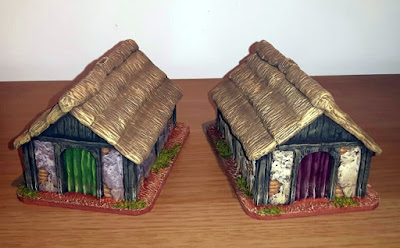...
Spurred by their successes on land, the Gebrovians sailed a small fleet around Caltabrian Straights to raid the shipping lines between the mainland and Little Clementia. This journey even upon itself was at some risk of raising the attention of the Bellephron Empire, but the fleet of four vessels passed through without incident, and began several weeks of raiding along the Clementian coast. Other than wrecking several fishing vessels, the fleet also captured a Clementian mail schooner, and a Tarsan merchantman.
Of course the Clementians could not let such a transgression lie, when both their own shipping and that of friendly nations was at threat, something must be done. And so they sent their flagship, the good ship 'Venus' and three escorts to meet the enemy wherever they could.
By October 1720 the Gebrovians had reached the limit of their own supplies, and a long journey home ahead, they sought to turn for home. It was only a few days into this return leg that the Clementians intercepted them; at the Cape of Pferdekof.
 |
| the Hostoi leeads the way |
The Gebrovian flagship, the Aleste Doi Cheznavoy, heavy with booty, made its' way south alongside the Corvette Jnaravikchi and two schooners of the Illuvmaa class, the Hostoi and the Zsatavoi. coming into a small archipelago of islands off the Pferdekopf Cape, the vessels progress was slowed as they sought safe passage. It was at this point the flotilla of Clementian ships found their quarry.
The Clementian Frigate 'Venus' and Corvette 'Telesto' approached from the East, whilst the Schooners, Europa and Acaste came from the Southwest.
Early in the engagement the wind was with the Gebrovians, and their schooners were easily able to anticipate and outmaneuver the Clementians. But raking fire came to naught, given the sturdy build of their ships with Clementian Iron Oak.
 |
| No luck here |
Conversely, when the Venus found itself abeam of the Jnaravikchi, its' deadly fusilade obliterated the fighting capability of the vessel; which was left floundering for the rest of the engagement.
Leaving it to idle , the Venus and its' escorts turned on the Aleste savaging it with fire from both sides. The Aleste weathered the storm and did its' best to return in kind, but the Clementians ships had more guns and more good fortune.
 |
| Off! |
The Aleste limped away, whilst the wind took its escorts north to rescue the Jnaravikchi, and to capture the unfortunate Telesto, which never really joined the fight, due to a mast breaking when caught in irons. The Telesto surrendered after a mauling assault. Even at sea the Gebrovians are better in hand to hand combat than at range with gunnery!
The Aleste ultimately lost all momentum and was surrounded by the Clementians, to save souls, she struck her colours and accepted here fate. and with that, the light failing, the engagement ended.
Each fleet had arrived with four vessels, and left with four, but the exchange was undeniably in the Clementian favour, departing with two Frigates and two Schooners, for the loss of one Corvette. The Clementian commander sailed home with his held held high, and some prized captives as well as a large ship and its booty. As for the Gebrovians, their badly mauled remnant fleet, took the modest trophies it had left to it and returned with their tails between their legs.
_______________________
This was the first naval game to grace our campaign, and for my sins - and apparently out of some misjudgement of our national abilities - I chose to play this based on having won the previous engagement. We used the Warhammer Historical 'Trafalgar' rules, as what I had available, but they did a good job with a small game like this; as to the 'miniatures', for the time being my collection of Pirates of the the Spanish Main cards provided the ideal contingency force.
The mechanics of running a fleet for the game are homebrewed and incredibly simple, but indicate that damaged or captured ships will require down time to repair. In our cases, neither side will have a full fleet again until the new year! But at that stage the Clementians will have something of an advantage, having traded a Corvette for a Frigate.
...























